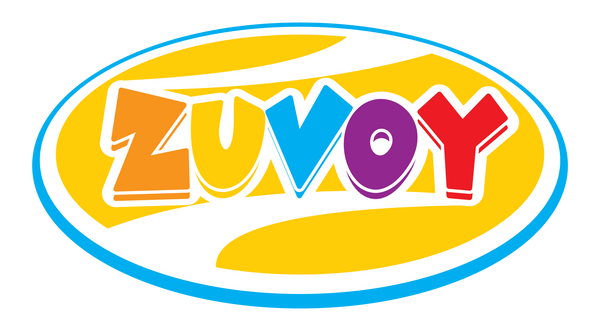Key Highlights
- Braille slates and stylus sets remain essential, affordable tools for teaching blind kids how to read and write braille without advanced devices.
- The best braille slates for beginners feature lightweight, portable designs and secure grids that fit a piece of paper firmly in place.
- Child-friendly slates come with ergonomic styluses and often larger cells, supporting safe, comfortable learning.
- Both the Braille Superstore and select Walmart stores offer braille slate kits suitable for young learners.
- Special kits for beginners help children master braille writing on their own terms.
- Parents and teachers can find guidance and support for choosing and using these tools effectively.
Introduction
Access to braille slates opens up a world of independence and learning for blind kids. Whether you’re searching at the Braille Superstore or browsing Walmart stores, the right slate and stylus can make writing braille simple and empowering for beginners. These tried-and-tested tools continue to play a vital role in education, even in the age of digital devices. This article explores how to select the best braille slate for your child, what features to look for, and where to find kid-friendly options that encourage confident, tactile literacy.
Understanding Braille Slates and Stylus for Children

Braille slates have long been a foundational tool for blind children learning to read and write. A braille slate consists of two hinged pieces—typically made from plastic or lightweight metal—that sandwich a piece of paper for tactile writing. The stylus, which comes with a pointed end and comfortable handle, is pressed into the slate’s grid to emboss braille dots. For beginners, these tools are not only accessible but also nurture crucial skills in braille literacy. Parents may wonder: What is a braille slate and stylus, and how do they help blind kids learn to read and write braille? These devices build essential independence from the very start.
Let’s explore why a braille slate is so important for young learners, and what you should consider when selecting the right one for a blind child just starting to learn braille.
What Makes a Braille Slate Essential for Blind Kids?
For visually impaired children, a slate and stylus are more than just tools—they represent access to written language. The tactile nature of braille allows blind kids to explore reading and writing independently, boosting confidence and critical thinking. With a braille slate, kids don’t just learn the code; they learn how to organize their thoughts and engage with the world.
When choosing the right braille slate and stylus for a beginner, look for options designed with children in mind. Lightweight slates made from molded plastic are ideal for small hands. “Children thrive when tools are intuitive and accessible,” says Sarah Vallie, a renowned advocate for braille education. A stylus with an ergonomic grip is crucial, as it keeps writing sessions comfortable and safe.
Parents can also check if the slate accommodates standard paper sizes, such as A4 or 8.5" x 11" (with a small trim). A secure locking mechanism prevents slips, making learning sessions frustration-free.
How Do Braille Slates and Stylus Work Together in Learning?
The process of using a braille slate and stylus is a hands-on journey in tactile literacy. Here’s how they work together:
- The slate features a series of grids, each representing a braille cell with six possible dot positions.
- A piece of paper is inserted and locked between the two plates, creating the writing surface.
- The stylus is pressed into the grid, embossing raised dots that form each braille character.
Step by step, the child places the paper into the slate, ensuring it’s straight and secure. They then use the stylus to punch dots into the correct positions—guided by the slate’s cell grid. For beginners, the act of forming each dot by hand helps cement braille’s structure in their memory. As each line is written, the slate can be moved down the paper, or in some models, a roller feeds the paper forward. This teamwork between slate and stylus turns braille writing into a manageable, repeatable task.
Key Features to Look for in the Best Braille Slates for Kids

Finding the perfect braille slate for a child involves more than just picking a writing frame. Key features include a lightweight design, accurate braille cell layout, and an ergonomic stylus for small hands. Many slates now offer double-sided writing and secure paper locking, preventing slips during practice. For beginners, larger cell grids provide more space, making dot placement easier and reducing errors.
Let’s take a closer look at safe, child-friendly designs and the special features that set beginner kits apart from standard models.
Child-Friendly Designs and Safety Considerations
Safety and comfort are top priorities when selecting a braille slate for young users. The materials used should be smooth and free from sharp edges, reducing the risk of accidental injury during braille writing sessions. A stylus with a rounded, ergonomic handle helps prevent hand fatigue and ensures a firm, gentle grip.
- Always choose slates made from durable, lightweight plastic or aluminum—these are easy to handle and less likely to cause strain.
- Ensure the package weight is manageable, typically under 10 ounces, to make the tool portable for school or home use.
- The paper locking mechanism should keep a piece of paper firmly in place, preventing slips that might lead to mistakes or frustration.
- Supervise beginners, especially at first, to guide proper stylus technique and encourage regular breaks for wrist comfort.
By keeping these safety tips in mind, parents and teachers can create a safe, positive environment where children can focus on learning instead of worrying about their tools.
Special Slate Kits for Beginners: Larger Cells and Unique Features
Beginner-friendly braille slates are designed with thoughtful features to simplify learning. These include larger braille cells, tactile indicators, and sturdy construction to withstand frequent use. Some kits even come with a variety of grid sizes and extra styluses for practice.
Many educational suppliers, including the Braille Superstore, offer starter kits tailored to young children. These packages prioritize ease of use and durability, making braille writing approachable for every learner.
Here’s a comparison of features you’ll find in beginner slate kits:
|
Feature |
Standard Braille Slate |
Beginner/Child Slate Kit |
|---|---|---|
|
Cell Size |
Regular (standard spacing) |
Larger, easier-to-feel cells |
|
Grid Layout |
Single or multiple lines |
Fewer lines, extra spacing for clarity |
|
Styli Included |
One standard stylus |
Ergonomic, often multiple styluses |
|
Paper Compatibility |
Standard A4 or 8.5"x11" |
Flexible; easier locking mechanism |
|
Unique Features |
Compact, basic design |
Tactile markers, color-coded parts |
|
Availability |
General retailers, Walmart stores |
Braille Superstore, specialist suppliers |
If you’re looking for a beginner kit, seek out options with tactile guides, color cues, or additional stylus shapes. These details make the learning experience smoother and more enjoyable for kids just starting their braille journey.
Conclusion
In conclusion, selecting the right braille slate is crucial for enhancing the learning experience of blind children. A well-designed slate and stylus not only make learning Braille more accessible but also foster independence and confidence in young learners. By considering key features such as safety, size, and usability, parents and educators can ensure that they provide the best tools to support children's educational journeys. Encourage your child to explore and engage with their learning materials using these essential tools. If you're looking for recommendations or assistance, don’t hesitate to reach out for expert advice!
Frequently Asked Questions
Where can parents find affordable or free braille slates for children in India?
Parents in India can purchase affordable braille slates and stylus sets from the Braille Superstore or select Walmart stores. Both retailers offer slates with reasonable package weight, sometimes under 10 ounces, and often include the stylus. Local educational nonprofits may also distribute free kits.
What materials work best with braille slates for young learners?
Thick, embossing-ready paper works best with braille slates for kids. Choose pieces of paper that fit neatly into the grid, such as standard A4 or slightly trimmed 8.5"x11" sheets. These materials help ensure clear dots and reduce errors, even with lightweight slates.
How can parents and teachers support kids in learning with a braille slate?
Encourage frequent practice with the braille slate and stylus on the writing braille shelf. Show beginners how to use the stylus correctly, celebrate their progress, and offer guidance as needed. Supportive adults make learning braille a positive, empowering experience for every child.

